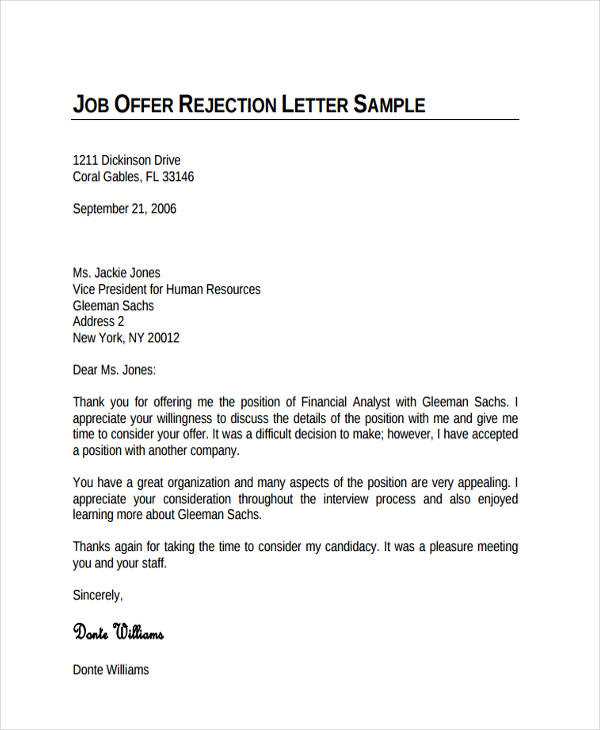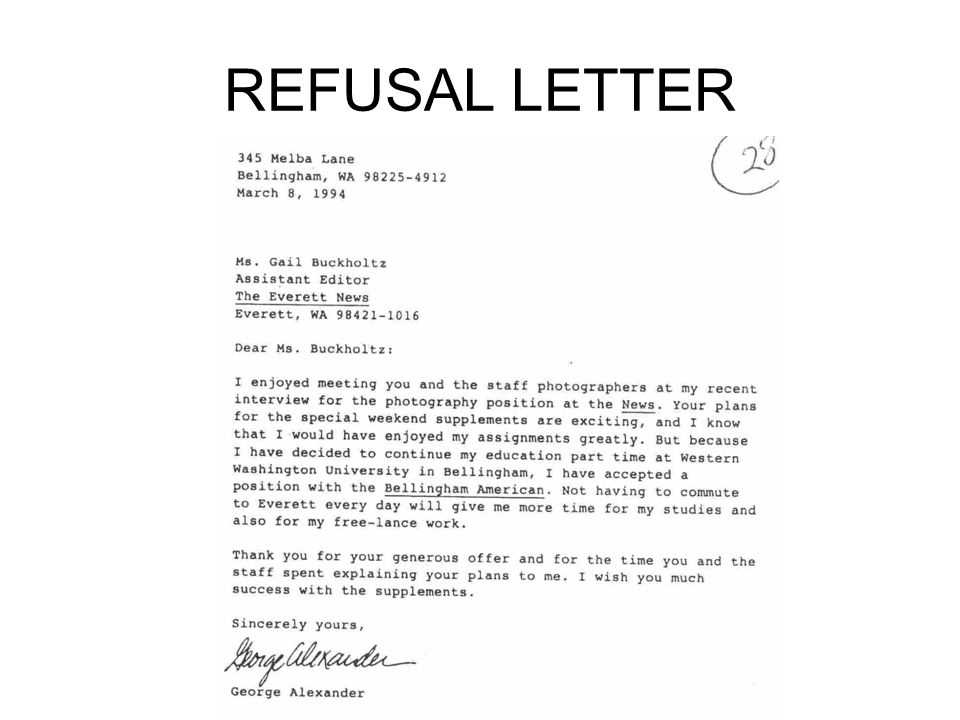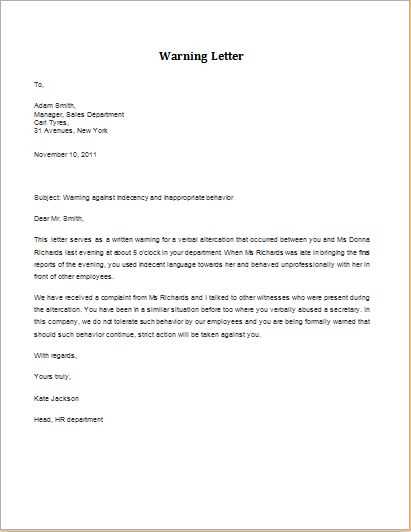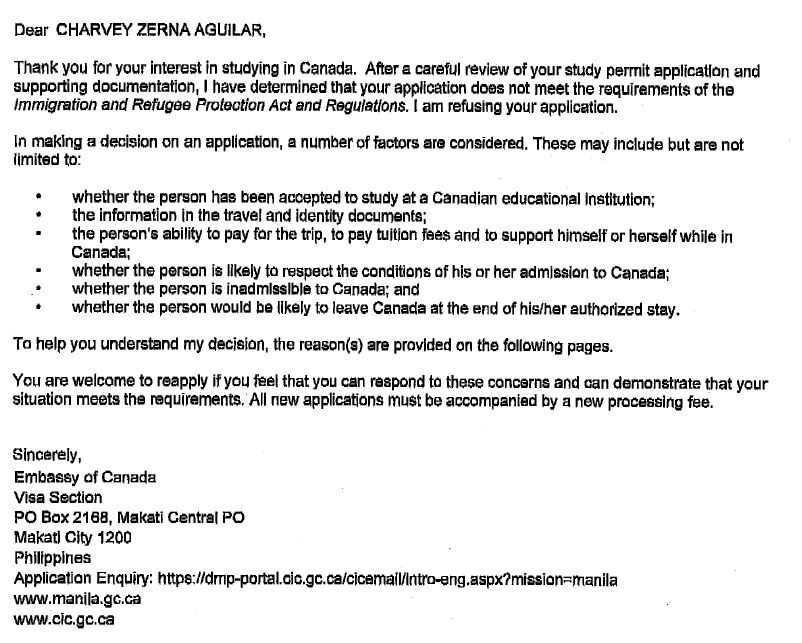Refusal Letter Template for Various Purposes

Turning down a request or opportunity can often be a delicate task. Whether it’s for a job, an invitation, or a proposal, the key is to communicate your decision respectfully and clearly. A well-crafted response not only ensures professionalism but also leaves the door open for future interactions. It’s important to balance honesty with courtesy, making sure the recipient understands your stance without feeling dismissed.
In any situation where you need to decline, the tone of your communication plays a crucial role. While the content remains important, the way you convey your message can determine the overall impact. This is why learning how to phrase a negative response is a vital skill. With the right approach, you can navigate the conversation smoothly, without creating unnecessary tension or misunderstanding.
Effective communication in these situations doesn’t just rely on words, but on how those words are structured and delivered. Understanding the best way to phrase your decision can make all the difference, whether you’re declining an offer, a proposal, or a request for your time.
Why Declining Requests Requires Thoughtful Responses
In both personal and professional settings, situations often arise where it becomes necessary to decline an offer, invitation, or proposal. Whether it’s due to personal constraints, priorities, or external circumstances, the way you communicate this decision can significantly influence relationships and perceptions. A carefully considered response ensures that the recipient feels respected while also making your position clear.
Why Clarity and Respect Matter

When declining any request, clarity is essential. A vague or overly complicated explanation can leave room for misunderstanding or even frustration. At the same time, respect should always be maintained, even when the answer is negative. Showing appreciation for the opportunity, while explaining your decision in a clear and professional manner, fosters goodwill and helps preserve positive rapport for future engagements.
The Role of Tone and Structure

It’s not just about what you say but how you say it. The tone and structure of your response play a vital role in maintaining professionalism. A response that is too abrupt can come off as rude, while a message that is overly lengthy can seem evasive. Striking the right balance ensures that your message is delivered effectively, leaving the recipient with a sense of understanding rather than disappointment.
When to Use a Decline Letter

There are various instances in both personal and business environments where turning down a request or invitation is necessary. Knowing when and how to communicate such a decision in writing is key to maintaining professionalism and respect. A well-structured response can help avoid any misunderstandings while ensuring that your stance is clear and courteous.
Professional Requests
In a professional setting, you might need to decline job offers, proposals, or meeting invitations. In such cases, a written response allows you to clearly express your decision while keeping the tone polite and respectful. This ensures that the communication is formal and can be referenced if needed in the future.
Personal Situations
On a personal level, you may face situations where you need to turn down invitations or requests from friends or acquaintances. While these interactions may feel less formal, it’s still important to handle them with care. A thoughtful response helps avoid awkwardness and preserves your relationships with others.
Key Elements of a Rejection Letter
When crafting a written response to turn down an offer or request, it’s important to include certain key elements that ensure clarity, professionalism, and respect. A well-constructed message should be clear, concise, and polite, ensuring that your position is communicated effectively while maintaining a positive tone.
- Clear Decision: Start by stating your decision to decline the request or offer. Be direct but tactful, avoiding any ambiguity.
- Reason for Declining: While not always necessary, providing a brief, respectful explanation helps the recipient understand your decision.
- Appreciation: Express gratitude for the opportunity or invitation. This adds a polite touch and helps soften the message.
- Future Opportunities: If applicable, indicate openness to future interactions or offer alternatives. This helps keep the door open for possible future engagements.
Including these elements ensures that your communication is not only clear but also considerate, fostering goodwill despite the negative response.
How to Maintain a Professional Tone
When conveying a negative response, it’s essential to maintain a tone that reflects professionalism and respect. A well-chosen tone ensures that your message is received with understanding, without creating unnecessary tension or discomfort. Even though the content may be disappointing, your approach can make a significant difference in how the recipient perceives the communication.
To keep your message professional, focus on using polite language, avoid harsh phrases, and ensure your tone remains neutral and calm. Acknowledge the other person’s request or effort, and express appreciation for the opportunity. By doing so, you show respect for their time and consideration, which helps preserve a positive relationship despite the rejection.
Examples of Decline Letters in Different Situations
In various scenarios, declining a request or offer may require slightly different approaches to ensure the response is appropriate to the context. Each situation calls for a tailored message that conveys the decision politely while considering the recipient’s position. Below are some examples of how to structure such responses based on the specific context.
| Situation | Example Response |
|---|---|
| Job Offer | “Thank you for offering me the position. After careful consideration, I have decided to pursue another opportunity. I appreciate your time and wish you continued success.” |
| Event Invitation | “I am grateful for your kind invitation to the event, but unfortunately, I will be unable to attend due to prior commitments. I hope the event is a success and thank you again for thinking of me.” |
| Business Proposal | “Thank you for submitting your proposal. After reviewing it thoroughly, we have decided not to move forward with your offer at this time. We value your effort and hope to have the opportunity to collaborate in the future.” |
| Personal Request | “I appreciate you reaching out to me, but I must respectfully decline your request. I hope you understand, and I wish you the best in your efforts.” |
Common Errors to Avoid in Rejection Letters
When crafting a message to decline an offer or request, certain mistakes can undermine the professionalism and clarity of your communication. Avoiding these errors helps ensure your response remains respectful, clear, and courteous. A few common pitfalls can easily be overlooked, so it’s essential to carefully review your message before sending it.
Unclear Language
Ambiguity can confuse the recipient and leave them uncertain about your decision. To avoid this:
- Be direct in your response, stating the decision clearly.
- Avoid vague phrases that might leave the recipient unsure about the outcome.
Overly Harsh Tone
While it’s important to be clear, it’s equally vital to maintain a respectful and polite tone. To keep your message tactful:
- Use polite language, even when delivering disappointing news.
- Avoid negative or dismissive phrases that may come across as rude.
Neglecting to Express Appreciation
Failing to acknowledge the effort or opportunity extended to you can make the message feel impersonal. To prevent this:
- Always express gratitude for the request, offer, or invitation, even if you’re declining.
- Consider adding a line of appreciation for the time or effort the other party invested.
How to Personalize Your Refusal Message
Personalizing a message when turning down an offer or request can help maintain a positive relationship and show respect for the other person’s time and effort. A tailored approach makes the response feel more sincere and less like a generic rejection. By including specific details or acknowledging the individual’s circumstances, you can make your message more thoughtful and considerate.
Start by addressing the recipient by name and referencing specific elements related to their request or offer. This shows that you have taken the time to review their proposal carefully. Additionally, offering a brief explanation for your decision–without going into too much detail–can help the other party understand your reasoning without feeling dismissed.
Another effective way to personalize your response is to express appreciation for their effort or interest, and leave the door open for future collaboration, if appropriate. A message that is thoughtful and genuine can leave a lasting positive impression even in the face of a negative decision.